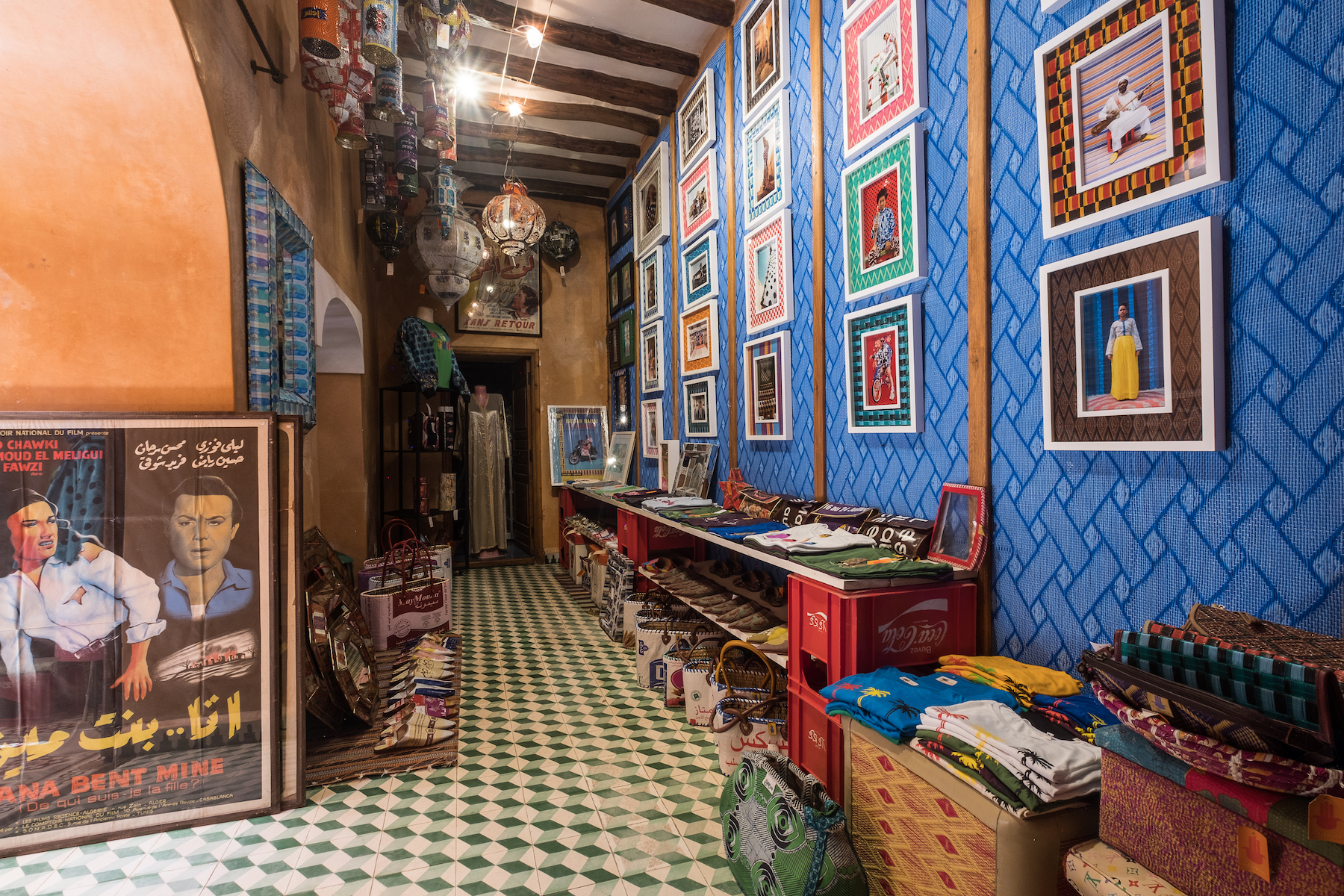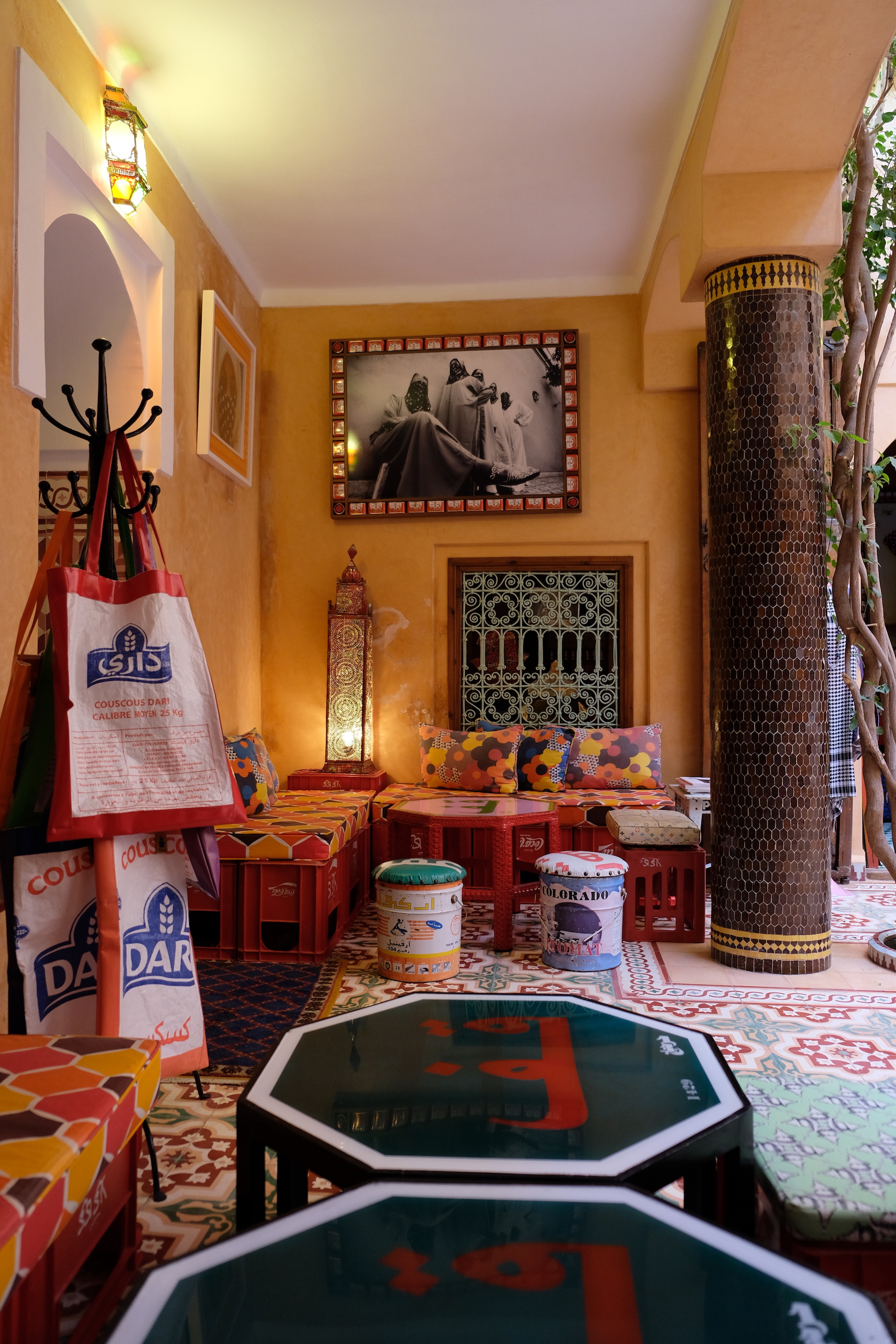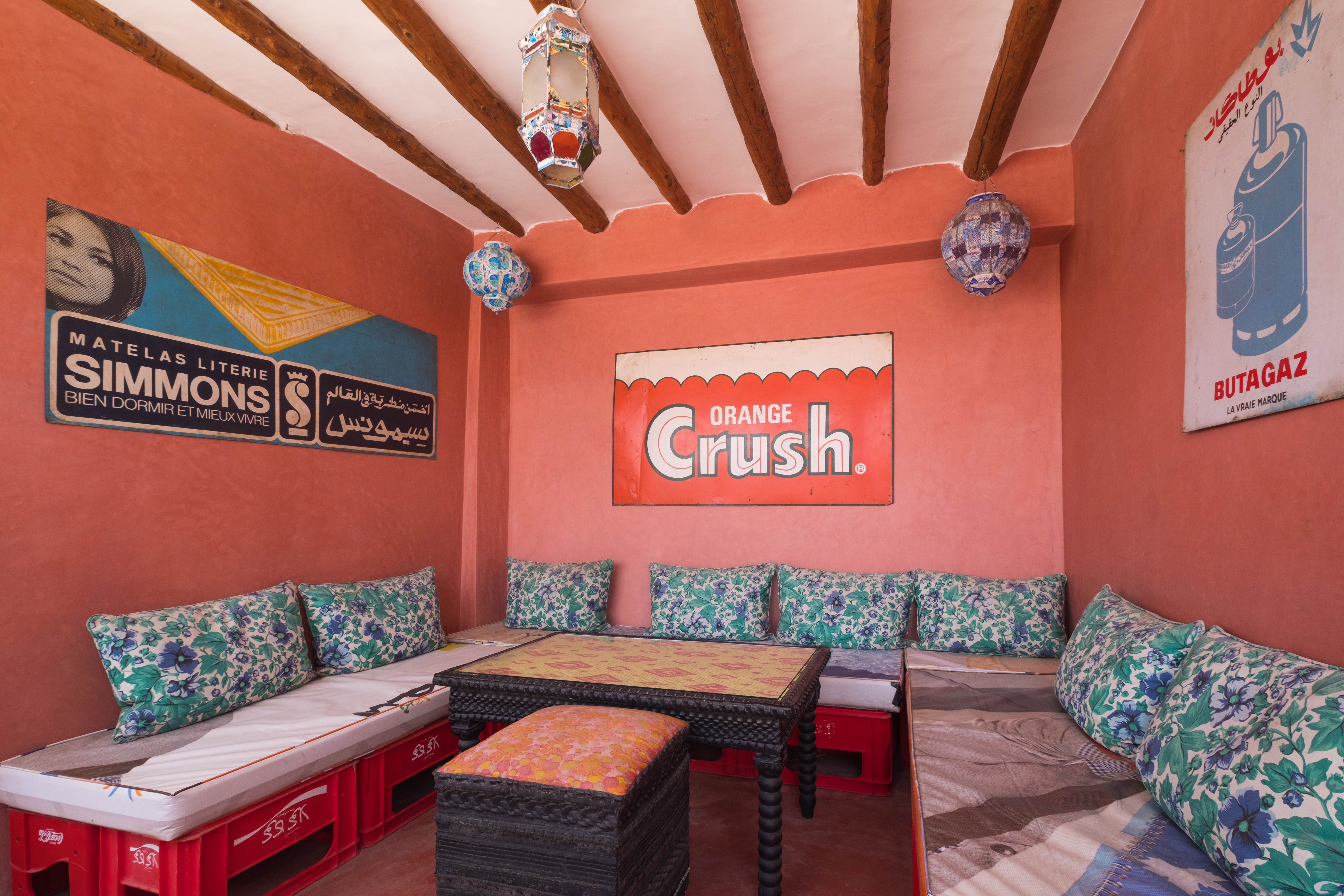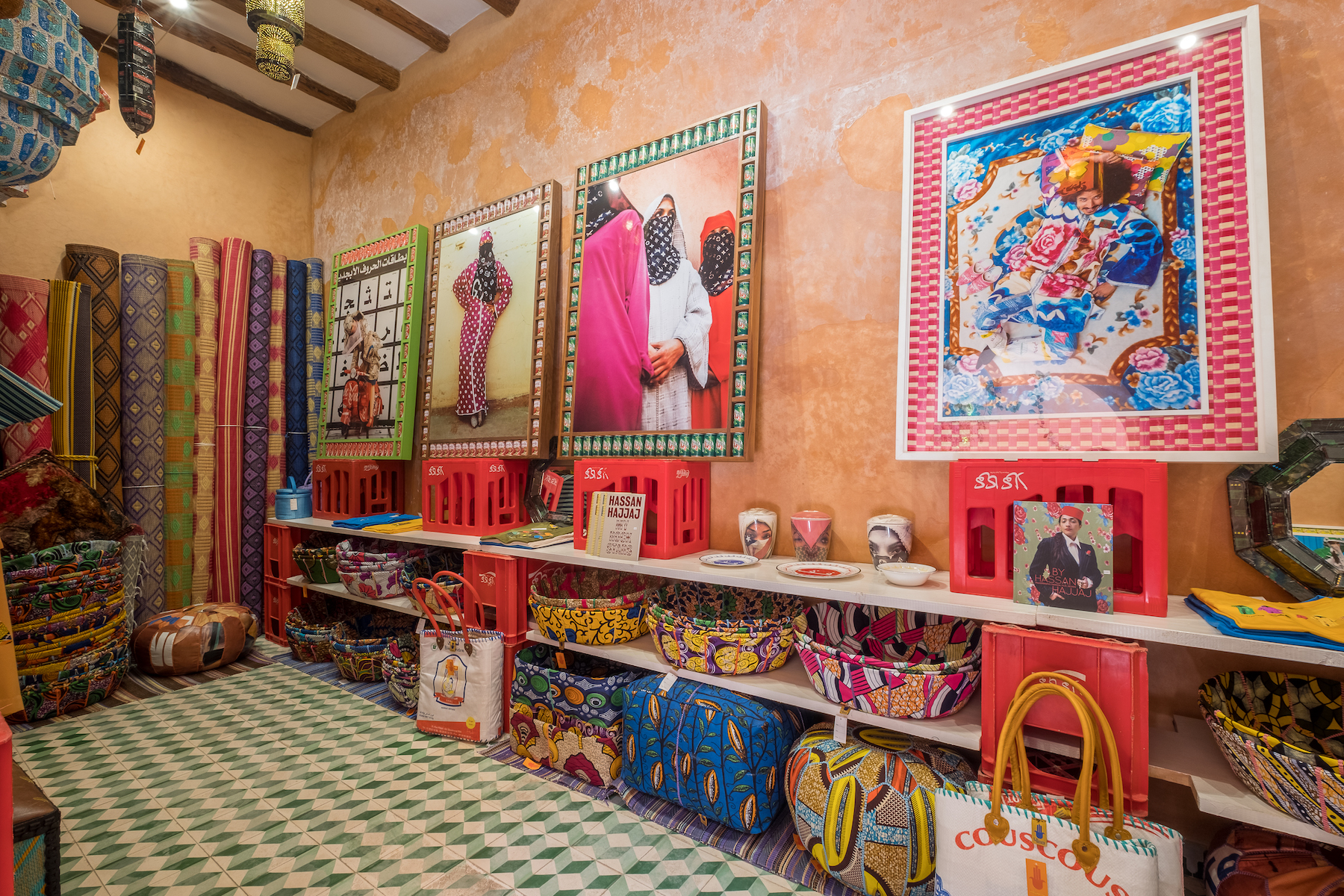
Marrakech’s Medina—the old city, encircled by walls—can be exhausting for the unseasoned western tourist. Any of the following can suddenly overtake you on the narrow, maze-like streets: a donkey pulling a cart piled high, a speeding moped, dogs, cats, tortoises, a small truck loaded with fruits. Space is already tight in the market with ottomans and pouffes, rugs, and colourful leather babouches stacked up next to stalls selling raw fish, chameleons, spices or pea soup. On your way to Hassan Hajjaj’s riad, which is loosely sign-posted, you can expect to get lost, distracted, or diverted by hustlers who will tell you the road is closed but claim they know the right way (for a small fee). Twisting and turning through this assault course on the senses, it’s a relief to step into Riad Yima.
The traditional architecture of the Moroccan riad is closed completely to the outside: no windows look out to the street from the rooms, designed to maximise privacy, in keeping with Islamic ideals, and to provide respite from the climate. They are instead built around an interior courtyard or garden, and often spectacularly decorated with plants, zellige tiles, orange and lemon trees and tadelakt plaster. In Marrakech nowadays, many of the traditional riads serve as guesthouses for foreigners.

Hajjaj opened Riad Yima here, in the heart of the Medina, in 2006. He was already used to having his own multifunctional spaces in London (he still runs a shop on Calvert Avenue in Shoreditch). But Riad Yima feels like the most authentic version of Hajjaj and an extension of his practice as an artist: it is his home, a shop, a tearoom, an exhibition space, and generally a place for cross-generational and inter-cultural meetings, music and conviviality.
During Marrakech’s busy art week in February, the international crowd were in town for 1-54 art fair, and Hajjaj was also present. His son showed up, as well as friends from London and New York, Marrakech and Tangier, all converged alongside a pack of eager curators, artists and journalists—it all felt like a big family, but you didn’t know who might show up next. Hajjaj, down-to-earth and welcoming, always surrounded by a crowd, was rushing off to give a talk at the fair. You’d never guess he’d just shot Billie Eilish for the cover of Vogue US. Mint tea was brought out with trays laden with nuts, dates and dried fruits.

Upstairs, there was an exhibition by a young local photographer from Marrakech—one of many of a new generation to have shown work here in the last decade, including the Casablanca-based Yoriyas. This has become an increasingly important part of what Hajjaj does at Riad Yima, using his own acclaim to shine a light on Moroccan talents who might not get the exposure (beyond Instagram) needed to kickstart their professional careers abroad. With few accessible commercial galleries and only one museum for contemporary art in Marrakech, The Museum of African Contemporary Art Al Maaden (MACAAL), Riad Yima plays an essential role in nurturing the upcoming scene not only within the city but from across Morocco.
“It is Hajjaj’s home and a place for cross-generational and inter-cultural meetings, music and conviviality”
It makes sense that Hajjaj would open his riad here. The photographer’s work relates to the way in which the commercial studio photographers operated in markets across Africa in the 1950s to 1970s. Photography then wasn’t just about taking someone’s portrait, it was about bringing together a community, dressing up and having fun. Hajjaj often uses the roof of Riad Yima for his own shoots; the riad is designed like one of his installations, a 360 version of one of his photographs—from the recycled stools, traditional patterned textiles and vintage African advertising signs to Arabic calligraphy and Pop kitsch reinventions of global brands.

There’s so much to look at in Riad Yima, which goes up three floors to a rooftop with views over the Medina—including Hajjaj’s own photographs, design objects and furniture, all for sale. The atmosphere is so laid back, it’s hard to leave. When I eventually head out, I stop down the street to buy supplies from a kiosk vendor, who asks where I’ve come from. On hearing we’ve been at Riad Yima, he erupts with emotion for Hajjaj praise: “Such a nice man, such a warm, generous person”, he enthuses. I have a feeling this is the kind of review Hajjaj would be most happy about.





